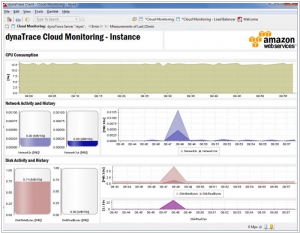Amazon CloudWatch vs Splunk
November 12, 2023 | Author: Michael Stromann
55
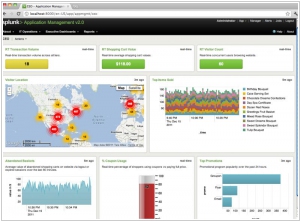
We make machine data accessible, usable and valuable to everyone—no matter where it comes from. You see servers and devices, apps and logs, traffic and clouds. We see data—everywhere. Splunk offers the leading platform for Operational Intelligence. It enables the curious to look closely at what others ignore—machine data—and find what others never see: insights that can help make your company more productive, profitable, competitive and secure.
See also:
Top 10 IT Monitoring software
Top 10 IT Monitoring software
Amazon CloudWatch and Splunk are both popular monitoring and observability tools used in the field of IT operations, but they have some key differences:
Cloud Provider vs. Log Management Platform: Amazon CloudWatch is a cloud-native monitoring and observability service provided by Amazon Web Services (AWS), which is a cloud computing platform and infrastructure provider. It is tightly integrated with other AWS services and primarily focuses on monitoring and managing resources and services within the AWS ecosystem. Splunk, on the other hand, is a log management and analysis platform that is not tied to any specific cloud provider and can be used for monitoring and analyzing data from various sources, including cloud environments, on-premises infrastructure, and third-party applications.
Data Collection and Analysis: Amazon CloudWatch is primarily focused on collecting and analyzing metrics, logs, and events from AWS resources and services, such as EC2 instances, S3 buckets, Lambda functions, and more. It provides a wide range of built-in integrations with AWS services, as well as the ability to create custom metrics and alarms. CloudWatch also offers basic log analytics capabilities, but its log management features are not as extensive as Splunk's. Splunk, on the other hand, is a comprehensive log management and analysis platform that can collect and analyze logs from various sources, including AWS, on-premises infrastructure, applications, and more. Splunk provides advanced log analytics features, such as real-time log ingestion, data enrichment, machine learning-based anomaly detection, and custom dashboards and visualizations.
Scalability and Flexibility: Amazon CloudWatch is designed to work seamlessly with AWS services and is tightly integrated with the AWS ecosystem. It provides automatic scaling, high availability, and durability of collected data. However, its monitoring capabilities are primarily focused on AWS resources and services, and it may have limitations when it comes to monitoring non-AWS resources or integrating with third-party tools. Splunk, on the other hand, is a more flexible and extensible platform that can be used to collect, analyze, and correlate data from various sources, not just AWS. Splunk provides a wide range of integrations with different data sources, and it can be customized and extended using its robust ecosystem of apps, add-ons, and APIs.
Licensing and Cost Model: Amazon CloudWatch is a native AWS service and is billed based on usage, with pricing tiers for metrics, logs, and events. The cost is primarily based on the number of metrics, logs, and events ingested, stored, and processed within CloudWatch. Splunk, on the other hand, has a different licensing and cost model. Splunk offers both on-premises and cloud-based deployment options, and its licensing is based on data volume ingested and indexed, as well as the number of users and features used. Splunk's licensing can be more complex and may require careful consideration of factors such as data volume, retention requirements, and usage patterns to estimate and manage costs effectively.
Advanced Features: Splunk offers a wide range of advanced features that may not be available in Amazon CloudWatch, such as machine learning-based anomaly detection, data enrichment, custom alerting and thresholding, custom dashboards and visualizations, and more. Splunk also has a large ecosystem of apps, add-ons, and integrations that can be used to extend its capabilities for specific use cases, industries, and requirements. Amazon CloudWatch, on the other hand, is primarily focused on basic monitoring and observability features within the AWS environment, with more limited advanced features.
In summary, the main differences between Amazon CloudWatch and Splunk include their focus (cloud provider vs. log management platform), data collection and analysis capabilities, scalability and flexibility, licensing and cost model, and advanced features.
See also: Top 10 IT Monitoring software
Cloud Provider vs. Log Management Platform: Amazon CloudWatch is a cloud-native monitoring and observability service provided by Amazon Web Services (AWS), which is a cloud computing platform and infrastructure provider. It is tightly integrated with other AWS services and primarily focuses on monitoring and managing resources and services within the AWS ecosystem. Splunk, on the other hand, is a log management and analysis platform that is not tied to any specific cloud provider and can be used for monitoring and analyzing data from various sources, including cloud environments, on-premises infrastructure, and third-party applications.
Data Collection and Analysis: Amazon CloudWatch is primarily focused on collecting and analyzing metrics, logs, and events from AWS resources and services, such as EC2 instances, S3 buckets, Lambda functions, and more. It provides a wide range of built-in integrations with AWS services, as well as the ability to create custom metrics and alarms. CloudWatch also offers basic log analytics capabilities, but its log management features are not as extensive as Splunk's. Splunk, on the other hand, is a comprehensive log management and analysis platform that can collect and analyze logs from various sources, including AWS, on-premises infrastructure, applications, and more. Splunk provides advanced log analytics features, such as real-time log ingestion, data enrichment, machine learning-based anomaly detection, and custom dashboards and visualizations.
Scalability and Flexibility: Amazon CloudWatch is designed to work seamlessly with AWS services and is tightly integrated with the AWS ecosystem. It provides automatic scaling, high availability, and durability of collected data. However, its monitoring capabilities are primarily focused on AWS resources and services, and it may have limitations when it comes to monitoring non-AWS resources or integrating with third-party tools. Splunk, on the other hand, is a more flexible and extensible platform that can be used to collect, analyze, and correlate data from various sources, not just AWS. Splunk provides a wide range of integrations with different data sources, and it can be customized and extended using its robust ecosystem of apps, add-ons, and APIs.
Licensing and Cost Model: Amazon CloudWatch is a native AWS service and is billed based on usage, with pricing tiers for metrics, logs, and events. The cost is primarily based on the number of metrics, logs, and events ingested, stored, and processed within CloudWatch. Splunk, on the other hand, has a different licensing and cost model. Splunk offers both on-premises and cloud-based deployment options, and its licensing is based on data volume ingested and indexed, as well as the number of users and features used. Splunk's licensing can be more complex and may require careful consideration of factors such as data volume, retention requirements, and usage patterns to estimate and manage costs effectively.
Advanced Features: Splunk offers a wide range of advanced features that may not be available in Amazon CloudWatch, such as machine learning-based anomaly detection, data enrichment, custom alerting and thresholding, custom dashboards and visualizations, and more. Splunk also has a large ecosystem of apps, add-ons, and integrations that can be used to extend its capabilities for specific use cases, industries, and requirements. Amazon CloudWatch, on the other hand, is primarily focused on basic monitoring and observability features within the AWS environment, with more limited advanced features.
In summary, the main differences between Amazon CloudWatch and Splunk include their focus (cloud provider vs. log management platform), data collection and analysis capabilities, scalability and flexibility, licensing and cost model, and advanced features.
See also: Top 10 IT Monitoring software
Amazon CloudWatch vs Splunk in our news:
2023. Cisco to acquire IT Monitoring giant Splunk for $28B
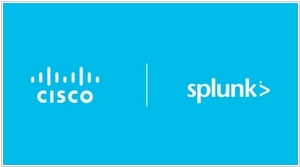
Cisco has announced that it is acquiring Splunk for $28 billion. This acquisition is strategically aligned with Cisco's security-focused business, as it gains access to Splunk's observability platform. This addition will enable Cisco to enhance its ability to assist customers in comprehending security threats while also providing valuable capabilities for analyzing extensive log data to address various challenges such as understanding system failures and troubleshooting a wide range of issues across enterprise systems. It's important to note that both company boards have already given their approval for the acquisition. However, it must undergo regulatory approval, which is not guaranteed due to the heightened scrutiny that such deals are encountering worldwide.
2020. Splunk acquires network observability service Flowmill
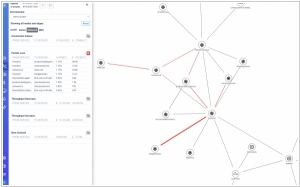
Data platform Splunk continues its acquisition streak as it expands its newly launched observability platform. Following the recent acquisitions of Plumbr and Rigor, the company has now announced the acquisition of Flowmill, a network observability startup based in Palo Alto. Flowmill specializes in helping users identify real-time network performance issues within their cloud infrastructure and offers traffic measurement by service to enable cost control. Similar to other players in this field, Flowmill leverages eBPF, a Linux kernel feature that allows the execution of sandboxed code without the need for kernel modification or loading kernel modules. This capability makes it particularly well-suited for application monitoring.
2020. Splunk acquires Plumbr and Rigor to build out its observability platform
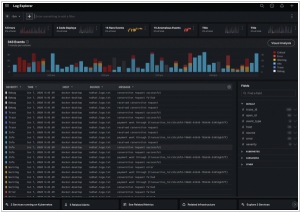
Data platform Splunk has recently made two acquisitions, namely Plumbr and Rigor, in order to enhance its newly launched Observability Suite. Plumbr specializes in application performance monitoring, while Rigor focuses on digital experience monitoring. Through synthetic monitoring and optimization tools, Rigor assists businesses in optimizing their end-user experiences. These acquisitions serve as valuable additions to the technology and expertise gained by Splunk through its acquisition of SignalFx for over $1 billion last year.
2017. Splunk expands machine learning capabilities across platform
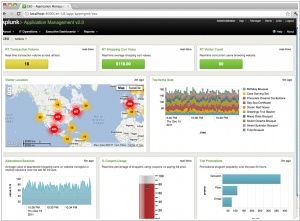
Cloud monitoring provider Splunk is bolstering its machine learning capabilities to facilitate the identification of critical data. The Splunk Machine Learning Toolkit introduces several new features specifically designed for those who prefer a do-it-yourself approach. Firstly, a new data cleaning tool has been implemented to prepare the data for modeling. Additionally, machine learning APIs have been introduced, enabling the importation of both open-source and proprietary algorithms for application within Splunk. Lastly, a machine learning management component allows for seamless integration of user permissions from Splunk into customized machine learning applications. For users seeking a more automated experience, Splunk offers new features such as Splunk ITSI 3.0. Leveraging machine learning, this tool assists in issue identification and prioritization based on the criticality of each operation to the business. These advancements empower users to derive meaningful insights from their data while tailoring the level of involvement according to their preferences.
2016. Splunk unveiled 300 machine learning algorithms for Operational Intelligence
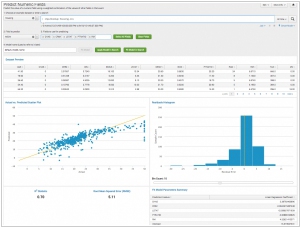
Splunk, a leading provider of Operational Intelligence platforms, has made significant advancements in incorporating machine learning capabilities into its platform, thereby expanding its range of services and capabilities. The company has integrated machine learning at the core of its platform through the introduction of a machine learning toolkit, which can be installed as a complimentary app on top of the Splunk Enterprise platform. This toolkit offers users access to a comprehensive set of 300 machine learning algorithms, with 27 of them conveniently pre-packaged and ready to use. These algorithms cover various categories such as clustering, recommendations, regression, classification, and text analytics. Furthermore, Splunk has enhanced its machine learning functionality within the IT Service Intelligence (ITSI) platform, which was initially introduced a year ago.
2015. Splunk acquired machine learning startup Caspida
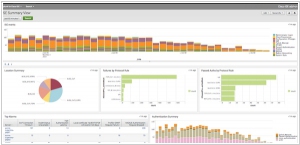
Cloud monitoring provider Splunk has recently acquired Caspida, a startup specializing in utilizing machine learning methods to detect cybersecurity threats both internally and externally. Splunk offers assistance to organizations in managing the influx of machine-generated data from their IT systems, employing data science techniques and automation to derive insights from it. Within its product portfolio, Splunk provides a security solution called Splunk App For Enterprise Security. By acquiring Caspida, Splunk enhances its security capabilities by incorporating the advanced machine learning techniques developed by Caspida. This empowers Splunk to analyze user behavior at a granular level, even for seemingly legitimate users with proper credentials. Splunk's overall approach revolves around data science-driven solutions, delivering automated threat detection and leveraging machine learning to continuously improve its capabilities over time.
2013. Splunk launches Splunk Cloud
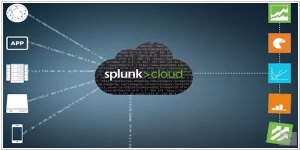
Splunk, the leading software platform for real-time operational intelligence, has announced the general availability of Splunk Cloud - a new service that brings Splunk Enterprise to the cloud. With Splunk Cloud, organizations can now gain visibility and operational insights into their machine-generated big data in the cloud, while also correlating this data across their cloud and on-premises environments. The introduction of Splunk Cloud for large-scale production environments expands the offerings of Splunk Storm, the cloud-based service introduced last year, which now provides free developer access to 20GB of total storage per month. Powered by Amazon Web Services, Splunk Cloud includes access to all features of the Splunk Enterprise platform, including apps, APIs, alerting, and role-based access controls.

